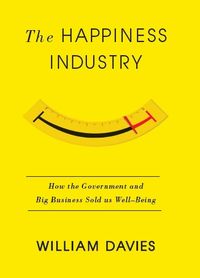 As the Australian Government analyses the productivity of the workplace it is vital that that analysis reflects the modern workplace and management practice. At the moment Australian workplaces are awash with training programs focusing on resilience and happiness, implying that each individual can change and improve a workplace culture but there has always been an undercurrent of manipulation to these courses and seminars. A new book by William Davies provides a fresh perspective that, rightly, questions the motives behind this modern trend and provides an important historical context. (For those who can’t purchase the book but want to know more, look at this series of articles)
As the Australian Government analyses the productivity of the workplace it is vital that that analysis reflects the modern workplace and management practice. At the moment Australian workplaces are awash with training programs focusing on resilience and happiness, implying that each individual can change and improve a workplace culture but there has always been an undercurrent of manipulation to these courses and seminars. A new book by William Davies provides a fresh perspective that, rightly, questions the motives behind this modern trend and provides an important historical context. (For those who can’t purchase the book but want to know more, look at this series of articles)
Davies’s book, “


